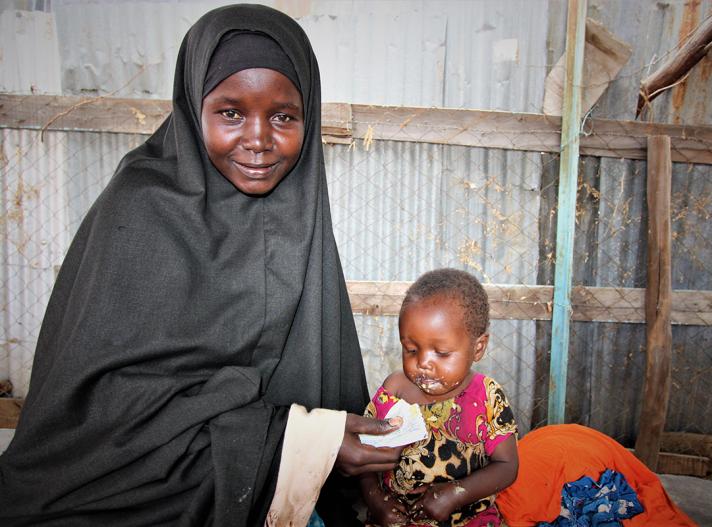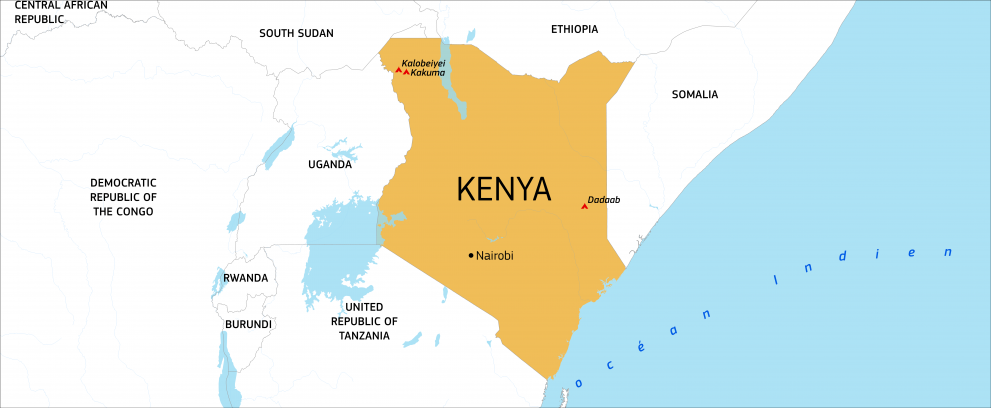Introduction
Kenya hosts nearly 700,000 refugees and asylum seekers. They are dependent on humanitarian assistance, even for their most basic needs.
After 5 consecutive poor rainy seasons, compounded by the impact of COVID-19 and rising commodity prices, food insecurity in Kenya’s arid and semi-arid lands is increasing. Some 1.5 million people are estimated to be acutely food insecure.
The EU is continuing its longstanding assistance to refugees in Kenya and is responding to disaster-related emergencies.
What are the needs?
Kenya has revised its intention to close all refugee camps by June 2022. The 2021 Refugee Act foresees a process that looks at converting camps into settlements.
Meanwhile, refugees, mainly from Somalia, South Sudan, the Democratic Republic of the Congo, Ethiopia and Burundi , continue to arrive, including unaccompanied minors. They will most likely remain in Kenya, as, for most of them, there seems little prospect of safely returning home anytime soon.
The registration of Somali asylum seekers had been put on hold since 2016. However, in early March 2023, the Government of Kenya resumed registration of undocumented individuals, including the newly-arrived refugees. Over 63,000 people were registered in Dadaab in 2023. The government also agreed to re-open the Ifo II camp in Dadaab.

Refugees cannot leave the camps due to the encampment policy, and their access to services and aid depends on international assistance.
After the devastating multi-year drought, the food security situation improved in 2023 thanks to better-performing rains and successful harvests across the arid and semi-arid lands. The number of acutely food insecure people went down from 4.4 million to around 1.5 million by the end of the year.
Despite this improvement, pockets of acute food insecurity and high levels of malnutrition remain.
At the end of 2023, the seasonal short rains, aggravated by the El Niño phenomenon, brought heavy rainfall, which led to flash and riverine flooding across the country, affecting thousands of people. More flooding is expected during the March to May long rainy season.
Epidemic outbreaks remain a major concern, with a cholera outbreak ongoing since October 2022 and an increase in the numbers of malaria cases.

How are we helping?
For 2024, the EU is allocating €11.5 million in initial humanitarian funding for Kenya.
Over the years, the EU has maintained its humanitarian support for refugee operations in Kenya. EU humanitarian actions have helped:
- secure safe, and dignified living conditions for refugees, including access to essential services like health and education,
- build the resilience of refugees and host communities in the arid parts of Kenya, where refugee camps are situated,
- support authorities in preparing for emergencies,
- respond to food security emergencies for the most vulnerable people in arid and semi-arid lands.
In the Kakuma and Dadaab refugee camps, the EU continues to support the provision of basic life-saving aid such as (i) food assistance; (ii) healthcare; (ii) nutritional assistance; (iv) water, sanitation and hygiene; (v) protection; and (vi) education.

An unrelenting drought is pushing families from their homes in Somalia across the border into Kenya.
Arriving at the Dadaab refugee camp, they look weary, and the children are weak and sickly. Many have had difficulty finding food for months.
See how we are supporting them.
EU humanitarian aid helps health facilities provide comprehensive services, including in-patient wards for refugee and host communities. It also provides clean water, sanitation facilities, and hygiene promotion to prevent illnesses.
Care for survivors of sexual and gender-based violence and preventive work with communities in the camps are also provided.
The EU contributes to the education of refugees and young people. We provide learning opportunities for more than 135,000 pupils enrolled in schools in the Dadaab and Kakuma camps.
The situation is worse for girls and other vulnerable learners, such as children with disabilities. They are often left behind in an increasingly resource-scarce educational environment.
The EU supports education projects targeting children with disabilities and requires that at least 50% of the beneficiaries are girls.
Last updated: 27/02/2024

